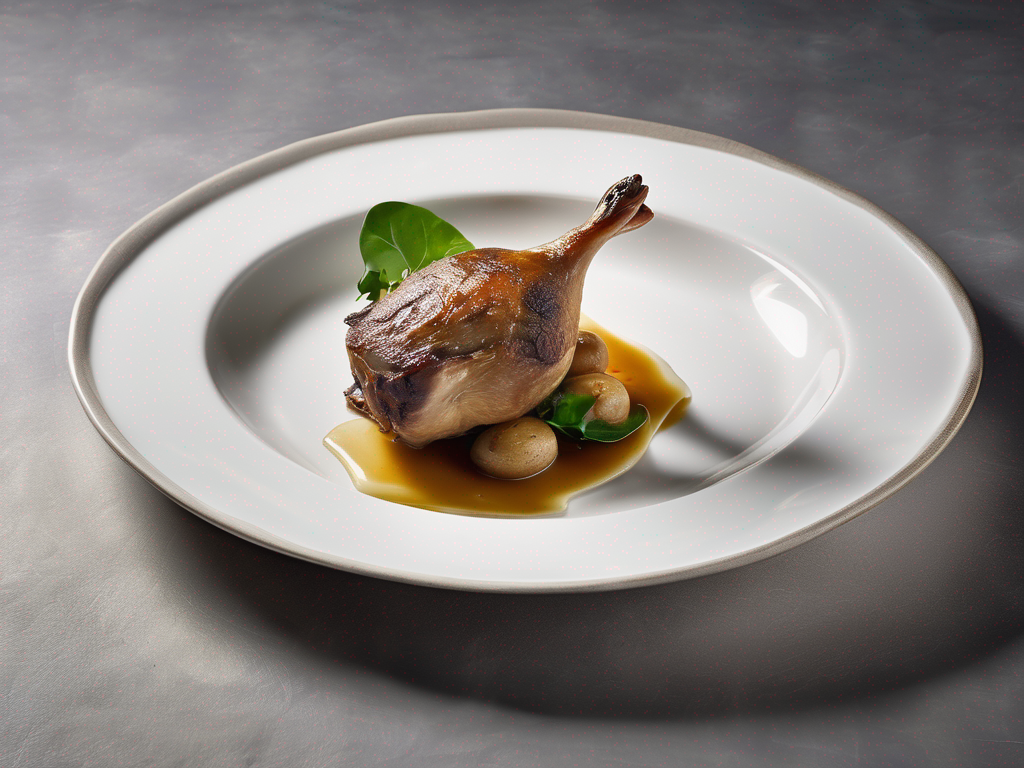
Signs that Duck Confit Has Gone Bad and Should Be Thrown Away
Get Your Free Food Safety Cheat Sheet
30 most common foods with instant answers. Print it and stick it on your fridge—completely free!
Signs that Duck Confit Has Gone Bad and Should Be Thrown Away
Duck confit is a delicious and luxurious dish, but like any perishable food, it can go bad if not stored properly. Knowing the signs that your duck confit has gone bad is essential to prevent foodborne illness and ensure you're enjoying it at its best. In this blog post, we'll explore the key indicators that your duck confit has spoiled and should be discarded. (Duck confit)
Understanding Duck Confit
Before we delve into the signs of spoilage, let's briefly discuss what duck confit is. Duck confit is a traditional French dish made by slow-cooking duck legs in their rendered fat until they are tender and flavorful. The process of curing and cooking the duck in its fat helps preserve the meat and develop rich, savory flavors.
If you're interested in learning more about the origins and preparation of duck confit, check out our detailed guide on [duck confit](/food/duck confit).
The Shelf Life of Duck Confit
Duck confit is a preserved food item due to the traditional cooking method, which involves cooking the duck in fat and then storing it in the same fat. When stored correctly, duck confit can last for several weeks in the refrigerator. However, like any perishable food, it can spoil if not handled properly.
Signs that Duck Confit Has Gone Bad
Here are the key signs that your duck confit has spoiled and should be thrown away:
1. Foul Odor
- Rancid Smell: If your duck confit emits a strong, unpleasant odor that is sour or rancid, it is a clear indication that it has spoiled.
- Off or Moldy Smell: Mold growth or an off smell resembling mold is a sign of spoilage and should not be ignored.
2. Unusual Texture
- Slimy or Sticky Surface: If the surface of the duck confit feels slimy or sticky to the touch, it indicates bacterial growth and spoilage.
- Discoloration: Any unusual discoloration, such as dark spots or patches on the meat, is a red flag that the duck confit is no longer safe to eat.
3. Changes in Appearance
- Bloated Packaging: If the packaging of the duck confit is swollen or bloated, it is a sign of bacterial activity and potential spoilage.
- Presence of Mold: Visible mold growth on the surface of the duck confit is a clear indication that it has gone bad and should be discarded.
4. Taste Test
- Off Flavor: If you notice any off or sour taste when you try a small amount of the duck confit, it is best to avoid consuming it further.
- Bitter or Metallic Taste: A bitter or metallic taste is a strong indicator of spoilage and potential contamination.
Safety Tips for Storing Duck Confit
To ensure the longevity and safety of your duck confit, follow these practical tips for proper storage:
- Refrigeration: Store duck confit in an airtight container or vacuum-sealed bag in the refrigerator at a temperature below 40°F (4°C).
- Labeling: Always label the storage container with the date of preparation to track its freshness.
- Avoid Cross-Contamination: Keep the duck confit away from raw meats and other perishable foods to prevent cross-contamination.
- Freezing: If you plan to store duck confit for an extended period, consider freezing it for up to three months for optimal quality.
Conclusion
In conclusion, being able to identify the signs that your duck confit has gone bad is crucial for maintaining food safety and preventing foodborne illness. By paying attention to the odor, texture, appearance, and taste of the duck confit, you can make informed decisions about its freshness and quality. Remember to follow proper storage practices to enjoy your duck confit at its best and avoid any risks associated with spoiled food. If in doubt, it's always best to err on the side of caution and discard any duck confit that shows signs of spoilage. Stay safe and enjoy your culinary adventures with duck confit! (Duck confit)
Authoritative Food Safety References
These agencies and university labs inform every tip and health precaution we publish.
USDA FoodKeeper – Cold Storage Guidelines
Official refrigerator, freezer, and pantry timelines maintained by the U.S. Department of Agriculture.
Visit USDA FoodKeeperFDA Produce Safety Rule & Grower Guidance
Field-to-fridge handling practices that prevent contamination of fruits, vegetables, and leafy greens.
Visit FDA Produce SafetyCDC Foodborne Illness Prevention Hub
Surveillance-backed guidance on pathogens, symptoms, and steps to reduce foodborne illness risk.
Visit CDC Food SafetyUC Davis Postharvest Technology Center
University research detailing optimal storage atmospheres for produce after harvest.
Visit UC Davis PostharvestPenn State Extension – Home Food Preservation & Safety
Peer-reviewed extension bulletins on safe canning, chilling, and reheating practices.
Visit Penn State ExtensionGet Your Free Food Safety Cheat Sheet
30 most common foods with instant answers. Print it and stick it on your fridge—completely free! Want more? Upgrade to the complete guide with 70+ foods.
Scan your food directly and get instant safety info using our AI-powered camera feature.